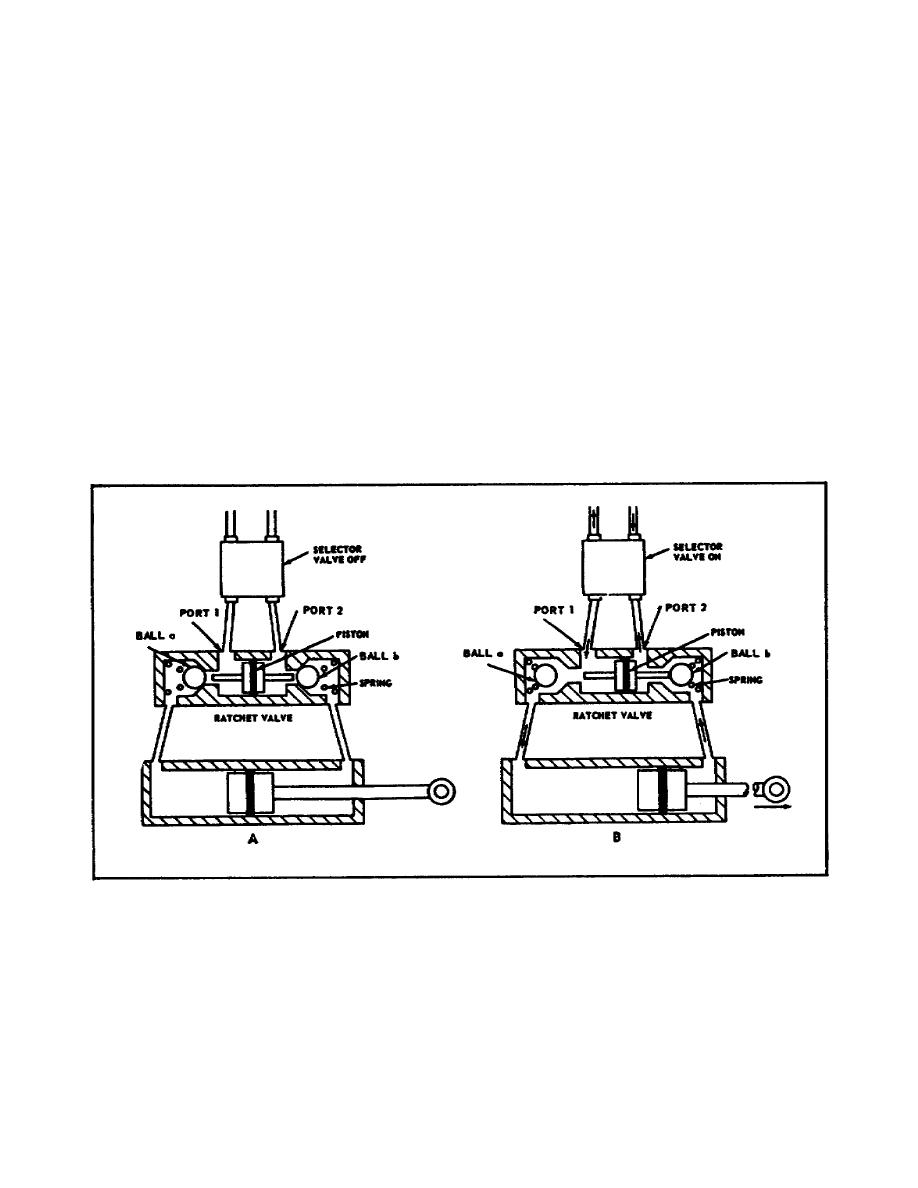
valve. The check valve allows fluid from the pump to flow in the normal direction as shown by the
arrow. Feedback forces tend to move the servo piston opposite to the direction of pump-produced
pressure. This tends to force fluid backward through the irreversible valve. The check valve keeps the
servo piston from yielding to feedback by locking the rear-ward flow of fluid. The relief valve is a
safety device to limit the pressure produced by feedback-induced movement of the servo piston. It
opens to allow fluid to bypass to the return line if the feedback pressure exceeds a predetermined safe
limit.
RATCHET VALVE
A ratchet valve is used with a double-action actuating cylinder to aid in holding a load in the position
where it has been moved. The ratchet valve ensures that there is trapped fluid on each side of the
actuating cylinder piston. This is necessary for the cylinder to lock a load against movement in either
direction.
A typical ratchet valve is shown in Figure 2-11. It consists of a housing with four ports, a polished bore,
two ball check valves and a piston. The piston has extensions on either end to unseat the two ball check
valves. Springs keep these valves on their seats when no pressure is applied to the system.
Figure 2-11. Typical Application of Ratchet Valve.
37
AL0926



 Previous Page
Previous Page
